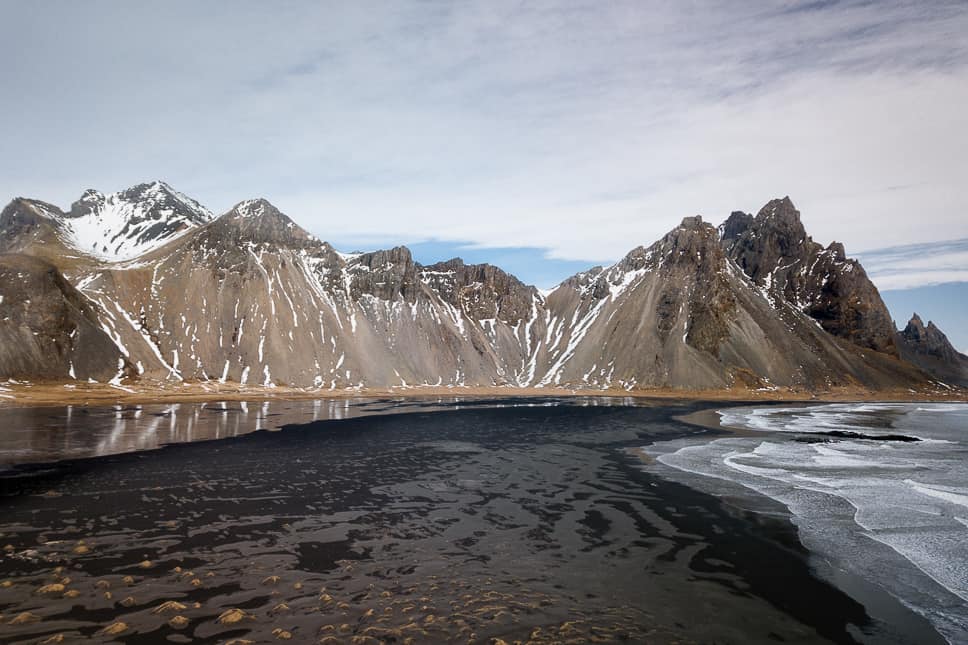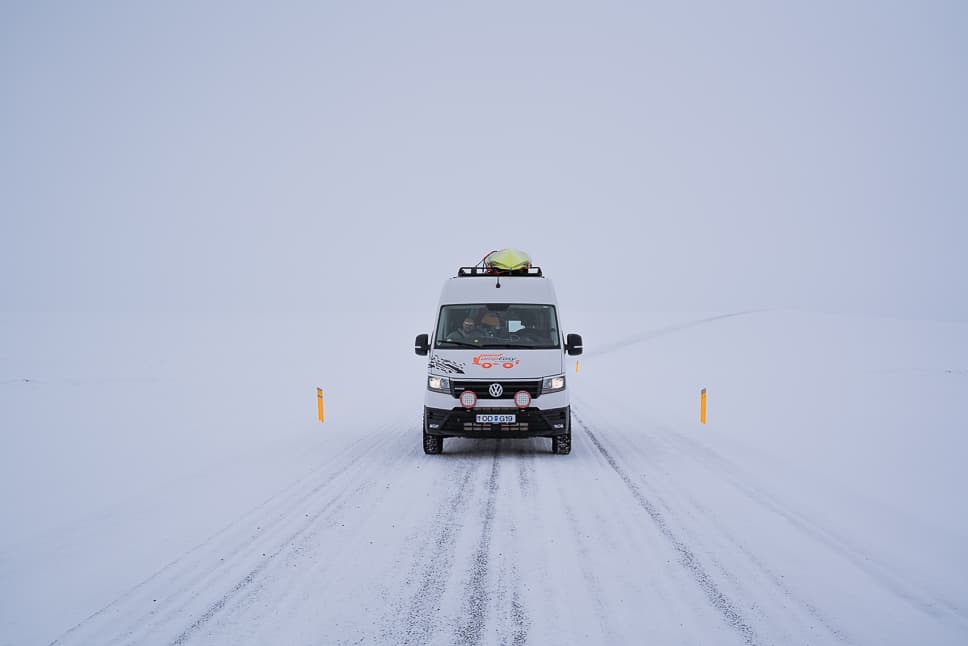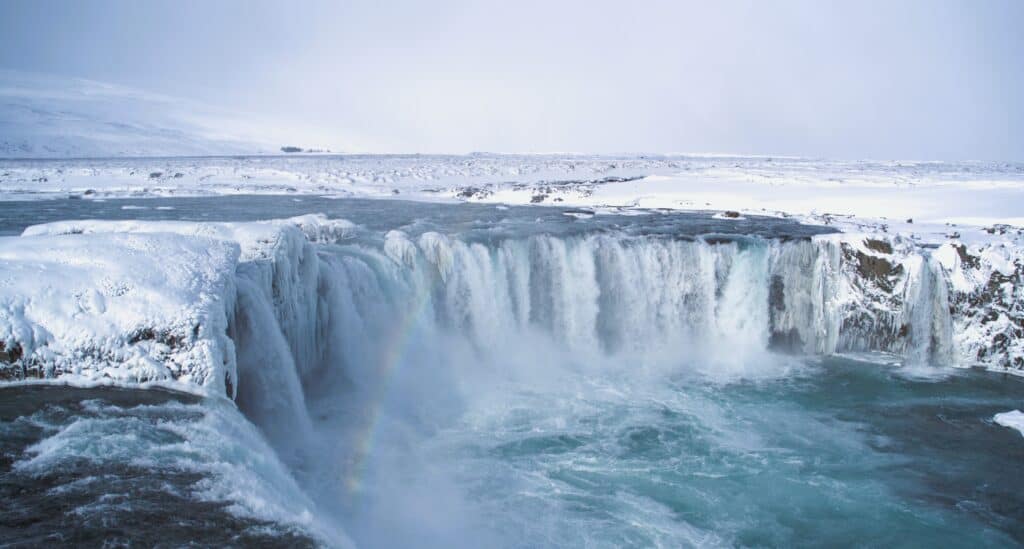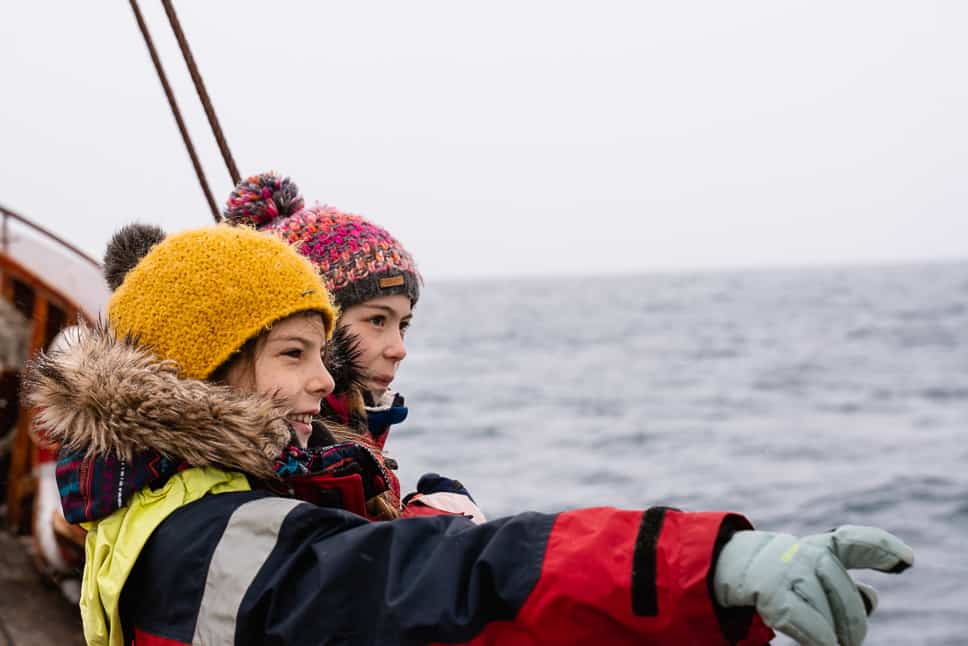THE ULTIMATE 10-DAY ITINERARY ICELAND
DISCOVER ICELAND: A 10-DAY ITINERARY
We have made this 10-day itinerary in Iceland for you. Start and finish are in the capital of beautiful Iceland, Reykjavik.
After leaving Reykjavik we will explore the Golden Circle, which includes the famous Geysir geothermal area, Gullfoss waterfall, and Thingvellir National Park. From there, we head to the south coast to witness the stunning black sand beaches, glaciers, and waterfalls.
After we have visited the South Coast we follow the East fjords to Akureyri and Husavik. We end this 10-day itinerary in Iceland with the Snaefellsnes Peninsula and the Blue Lagoon.
BEST TIME TO VISIT ICELAND
The best time to visit Iceland depends on what you want to see and do. The peak tourist season in Iceland is during the summer months, from June to August when the days are long and the weather is mild. However, this is also the time when the country is the most crowded, and prices for accommodation and tours are higher.
For those who want to experience the famous Northern Lights, the best time to visit Iceland is during the winter months, from November to February. During this time, the days are short, and the weather is cold, but the dark nights provide the perfect conditions for viewing the Aurora Borealis. Keep in mind that the Northern Lights are a natural phenomenon, and there is no guarantee that you will see them, even during the best time of the year.
For outdoor enthusiasts, the best time to visit Iceland is during the shoulder season, from May to June and September to October. During these months, the weather is still mild, and there are fewer tourists, which means that you can enjoy Iceland’s natural beauty without the crowds.
We were in Iceland in April. There were not many tourists and the weather was already pleasant. Although there were also a few very cold days in between. But with the right clothing and the right material, this should not be a problem.
IS 10 DAYS ENOUGH FOR ICELAND?
If you want to visit Iceland in 10 days, we highly recommend renting a car or campervan and driving through the country yourself. Driving through Iceland is a big part of the adventure and offers some of the most breathtaking landscapes you’ll ever see.
We suggest renting your vehicle from Keflavik airport, and we recommend using Rentalcars for cars and CampEasy for campervans. While a 4WD is always handy in Iceland, it’s not necessary for this 10-day itinerary, especially in the summer.
Driving in Iceland can be safe and doable depending on the season you plan to travel. It’s important to be well-prepared, especially during the winter months from October to April. We have a dedicated article on driving in Iceland during the winter months, but even during the summer, it’s essential to be aware of potential bad weather.
By driving yourself, you’ll have the freedom to explore Iceland at your own pace and save money on accommodation by staying at campgrounds and cooking your food.
HOW DO I PLAN AN ICELAND ITINERARY?
Here are some tips for planning an Iceland itinerary:
Decide how many days you’ll be in Iceland. Most itineraries take 7-10 days to see the highlights…
The most popular spots include Blue Lagoon, Gullfoss, Geysir, Jokulsarlon Glacier Lagoon, Westman Islands, Lake Myvatn, Snæfellsnes Peninsula. These are all included in our 10-day itinerary for Iceland.
Book the popular activities like whale watching, glacier hiking, caving, snowmobiling, and hot springs in advance.
In summer, plan to see the midnight sun in the north and Northern Lights in the east/north in winter.
Download offline maps before trips to remote areas with no data coverage. Maps.me is very good for hiking
Rent a 4WD vehicle for flexibility on F-roads, or take tours if uncomfortable driving independently.
Check weather and road conditions regularly via road.is
DAY 1: REYKJAVIK
Exploring the City
On the first day of your 10-day itinerary in Iceland, you’ll explore the city and its many attractions. Start your day with a visit to Hallgrimskirkja, the iconic church that dominates the Reykjavik skyline. This unique church is inspired by the Icelandic landscape and features a towering spire that offers panoramic views of the city.
After admiring the views, head to the nearby Harpa Concert Hall and Conference Centre. This stunning building, with its distinctive glass facade, is home to some of Iceland’s best cultural events and exhibitions.
Next, take a stroll down Laugavegur, the city’s main shopping street. Here, you’ll find an array of shops, cafes, and restaurants, as well as street performers and artists.
If you have more time and like museums, you can go to the National Museum of Iceland or the Reykjavik Art Museum. Both offer a fascinating insight into Icelandic history, culture, and art.
Where to stay in Reykjavik
Hotel Borg by Keahotels – This historic hotel is situated on Reykjavik’s main square and features elegant rooms, a spa, and an on-site restaurant. Guests love the luxurious atmosphere and central location. Prices start from €250 for 2 pers.
Fosshotel Reykjavik – This modern hotel is situated near the city center and offers spacious rooms, a fitness center, and an on-site restaurant. Guests love the sleek design and convenient location. Prices start from €170 for 2 pers.
Kex Hostel Reykjavik – This trendy hostel is situated near the city center and features affordable dormitory-style rooms, a bar, and a restaurant. Guests appreciate the unique decor and social atmosphere. Prices start from €45 per person.
DAY 2: GOLDEN CIRCLE
On the second day of the Iceland itinerary, we head out to explore the famous Golden Circle. This popular route is a must-see for anyone visiting Iceland. You can choose to drive back to Reykjavik for spending the night or drive to the South Coast and spend the night in Selfoss or Eyrarbakki (one of our favorite places…)
The Golden Circle route in Iceland is 186 miles (300km) long. It should take you four hours without any stopping time or sightseeing. That is when you start and end your day in Reykjavik.
Thingvellir National Park
The first stop on the Golden Circle is Thingvellir National Park. This UNESCO World Heritage Site is located in a rift valley caused by the separation of two tectonic plates. You can walk between the plates and see the unique landscape that has formed over thousands of years.
The park also has historical significance as it was the site of Iceland’s first parliament in 930 AD. Check the visitor center for more info about the history of the park.
In the Thingvellir National Park, you can go diving or snorkeling in Silfra. That is one of the best diving spots in the world. The best thing is to book in advance to secure your spots. Check the Get your Guide site for the best promotions and reviews.
Geysir Geothermal Area
Next on the itinerary is the Geysir Geothermal Area, home of the famous Strokkur geyser. This natural wonder erupts every few minutes, shooting water up to 30 meters into the air. You can also explore the other geothermal features in the area, including bubbling mud pools and steam vents. Next to the Geysir area you can find toilets and a small restaurant.
Gullfoss Waterfall
The final stop on the Golden Circle is the stunning Gullfoss Waterfall. This massive waterfall has two stages. One of them drops 21 meters, the other one 11 meters. It’s one of the most spectacular waterfalls of Iceland.
EXTRA:
If you have more time you can also visit these spots along the way:
Kerid Crater
The Kerid Crater is a volcanic crater located in southern Iceland, approximately 30 minutes from the town of Selfoss. The crater is approximately 270 meters wide and 55 meters deep, with a stunning blue-green lake at the bottom.
Visitors can walk around the rim of the crater for panoramic views of the surrounding landscape, and there is a path down to the lake for those who want to get a closer look.
Reykjadalur thermal river
To explore the Reykjadalur thermal river, visitors can take a hike through the Reykjadalur valley, which takes approximately 45 minutes to an hour each way. The hike is relatively easy and suitable for most fitness levels, with a well-marked trail that leads through the valley past bubbling hot springs and steaming vents.
This is the starting point of the hike. There is a small cafe.
The Secret Lagoon
The Secret Lagoon is a natural hot spring located in the small village of Flúðir in South Iceland. The lagoon is fed by geothermal springs and has a temperature of around 38-40°C. Entry is 3000 ISK for adults and free for kids from 14 years and younger.
Where to stay in Eyrarbakki or Selfoss
Selfoss is one of the bigger towns. You can buy food or other stuff here. Hostel Selfoss is a great place to stay in this area. Prices start from €100 for 2 persons.
Closer to the sea we have Eyrarbakki, a small fishing town. Sea Side Cottages or Guesthouse 77 are good places to stay.
If you want some more luxury, you can check Hotel Ranga. One of the best hotels in Iceland, but that comes with a price. Prices start from €600 for 2 people.
DAY 3: SOUTH COAST
On the third day of the Iceland itinerary, we will discover the South Coast which is known for its stunning waterfalls, black sand beaches, and breathtaking scenery.
From Eyrarbakki to the Black Sand beach in Vik it takes about 140km or 87 miles.
Seljalandsfoss Waterfall
The first stop on the South Coast tour is the Seljalandsfoss Waterfall. This waterfall is unique because visitors can walk behind it, providing a unique and unforgettable experience. The waterfall is over 60 meters tall and is surrounded by lush greenery, making it a popular spot for photographers.
Skogafoss Waterfall
The next stop on the South Coast tour is the Skogafoss Waterfall. This waterfall is one of the largest in Iceland and is over 60 meters wide. Visitors can climb up a staircase to the top of the waterfall to enjoy the stunning views of the surrounding landscape.
Black Sand Beach
The final stop on the South Coast tour is Black Sand Beach, also known as Reynisfjara. This beach is famous for its black sand and basalt rock formations. Visitors can also see the Reynisdrangar rock formations, which are said to be trolls that were turned to stone by the sunlight.
Be careful on this beach as several people died here because of the waves. Never turn your back to the ocean.
EXTRA:
Sólheimasandur plane wreck
You can park your car, approximately 10 kilometers east of the town of Vik. From there, you must hike approximately 4 kilometers (2.5 miles) to reach the plane wreck. The trail to the plane wreck is flat and easy to follow.
Dyrhólaey viewpoint and lighthouse
As you travel towards Vík, you will come across the easily accessible Dyrhólaey viewpoint, which marks the southernmost point of Iceland. From here, you can take in the breathtaking sight of the magnificent stone archway and the vast expanse of the black beach.
If you wish to explore the lighthouse, you will need a 4×4 vehicle or can opt to hike up there. During summer, there is a chance of spotting puffins in the area. However, it is important to note that sometimes cars are not permitted as the cliffs are home to nesting birds.
DAY 4: VATNAJOKULL NATIONAL PARK – VESTRAHORN
From Vik, we follow the coast to Hofn. That’s about 270km or 170 miles.
Skaftafell Glacier Hike
On day four of the 10-day Iceland itinerary, you will explore the stunning Vatnajokull National Park. The first stop is the Skaftafell Glacier, where you can embark on a guided glacier hike. The hike takes about 3-4 hours and covers approximately 8 kilometers.
Along the way, you will witness breathtaking views of the surrounding mountains, glaciers, and rivers. The hike is suitable for all skill levels and is led by experienced guides who provide all necessary equipment.
Jokulsarlon Glacier Lagoon
After the glacier hike, visitors can head to the Jokulsarlon Glacier Lagoon, located just a short drive away. The lagoon is a natural wonder and is filled with floating icebergs that have broken off from the nearby glacier.
Visitors can take a boat tour to get up close to the icebergs and even spot seals swimming in the water. The boat tour lasts about 45 minutes and is led by knowledgeable guides who provide interesting information about the lagoon and its surroundings.
The Jokulsarlon Glacier Lagoon is also a popular spot for photographers, as the scenery is truly spectacular. Visitors can capture stunning photos of the icebergs, the glacier, and the surrounding mountains. After the boat tour, visitors can explore the nearby Diamond Beach, where the icebergs wash up on the black sand beach, creating a stunning contrast.
Stokness – Vestrahorn
Vestrahorn is a stunning mountain located on Iceland’s southeastern coast, near the town of Höfn. The mountain is known for its distinctive shape and dramatic peaks, which rise up from the surrounding black sand beach and lagoon.
There is a small entrance fee (€5 /$6). At the entrance you will find the Viking Café, it is also possible to spend the night with a camper next to the pub.
If you have more time you can visit an old Viking village built as a set for film decor but it was never used.

Where to sleep in Höfn
Guesthouse Hvammur offers affordable rooms in a great location, just a short walk from the harbor. Guests appreciate the clean and comfortable rooms, as well as the friendly staff. Prices start from €100 for 2 people.
Fosshotel Vatnajökull is located north of Hofn and offers comfortable rooms with modern amenities, as well as an on-site restaurant and bar. Guests love the convenient location and stunning views of the surrounding mountains and glaciers. Prices start from €200 for 2 people.
Hotel Höfn offers luxurious rooms with stunning views of the surrounding landscape, as well as a spa, restaurant, and bar. Prices start from €200 for 2 people.
We also listed 10 unique hotels in Iceland in this article. The Fosshotel is one of them.
DAY 5: EAST FJORDS
On the fifth day of the 10-day Iceland itinerary, we will explore the stunning East Fjords region. We do have a long but scenic drive from Höfn to Egilsstadir. From Egilsstadir you can make an extra trip to Bakkagerði, the puffin capital of Iceland.
Seydisfjordur
The first stop of the day is Seydisfjordur, a small town surrounded by snow-capped mountains and cascading waterfalls. Visitors can stroll through the town’s colorful streets, admire the local art scene, and visit the Skaftfell Center for Visual Art.

Seydisfjordur
Hengifoss Waterfall
Next on the itinerary is Hengifoss Waterfall, one of the tallest waterfalls in Iceland. The hike to the waterfall is approximately 4km or 2.5 miles and takes visitors through a stunning canyon and past several smaller waterfalls. At the top, visitors can enjoy breathtaking views of the surrounding landscape and take in the beauty of the 420-foot waterfall.
Bakkagerði or Borgarfjörður, capital of the Puffins
One of the most popular attractions in Bakkagerði is the Hafnarhólmi nature reserve, which is home to a variety of seabirds, including puffins, guillemots, and kittiwakes.
You can take a hike along the cliffs for stunning views of the surrounding landscape and the chance to spot these beautiful birds in their natural habitat.
Read this article about puffins when and how you can see them.
Where to sleep in Egalsstadir or Borgarfjörður
A good budget option is the Lyngás Guesthouse. This guesthouse offers affordable rooms in a great location, just a short walk from the town center. Guests appreciate the clean and comfortable rooms, as well as the friendly staff. Prices start from €100 for 2 people.
Located in the heart of Egilsstadir you can find Hotel Herad. Prices start from €250 for 2 people.
If you want to stay in Borgarfjördus you might have a look at Blabjorg Resort. Prices start from €124 for 2 people.
DAY 6: MYVATN
On the sixth day of the Iceland itinerary, visitors will explore the Myvatn area, which is known for its lake, wellness, and geothermal activity. From Egilsstadir it is a 2h15 drive to the lake.
Myvatn Nature Baths
Nestled in the breathtaking region of Myvatn in Iceland, lies a hidden gem that is a must-visit for any traveler. The Myvatn Nature Baths are a series of natural hot springs that offer visitors a unique and relaxing experience in the midst of Iceland’s stunning natural beauty.
You can purchase tickets to access the pools and enjoy the warm, mineral-rich water that is said to have healing properties. In addition to the pools, the Myvatn Nature Baths also offer a variety of amenities, including a steam bath, sauna, and a restaurant that serves traditional Icelandic cuisine.

On our way to Myvatn, be always sure to check the weather in advance
Myvatn Geothermal Area
The first stop is the Myvatn Geothermal Area, a unique and otherworldly landscape of bubbling mud pools, steam vents, and colorful mineral deposits. Visitors can walk along a boardwalk to get a closer look at the geothermal activity and learn about the science behind it.
It is important to note that the smell of sulfur can be quite strong in this area, so visitors should be prepared.
We found this article about Lake Myvatn and the surroundings very interesting.
Dimmuborgir Lava Fields
Next, visitors will head to the Dimmuborgir Lava Fields, which are a series of volcanic rock formations that were created during a lava flow thousands of years ago.
DAY 7: HUSAVIK – AKUREYRI
On our seventh day of this fantastic 10-day Iceland itinerary, we will visit Akureyri.
But before we drive to Akureyri we go to Husavik, the capital of Europe for whale watching! We wrote an entire article about whale watching in Iceland. You better read it before you travel to Husavik.
From Myvatn to Husavik it’s about a 45min drive. From Husavik to Akureyri it is 1h. You will probably do a whale-watching tour in Husavik which is normally 2h-3h.
Godafoss waterfall
The Godafoss waterfall is situated along the country’s main ring road, about 45 minutes away from Akureyri, Iceland’s second-largest locality. The river Skjálfandafljót falls from a height of 12 meters over a width of 30 meters, creating a single-drop type of waterfall that is 39 feet tall.
The waterfall is known for its curved shape and is often compared to the famous Niagara Falls.

Husavik
Husavik is known as the whale-watching capital of Iceland, with a variety of tours available that offer visitors the chance to see these magnificent creatures up close in their natural habitat.
Whale-watching tours depart from the town’s harbor and take you out into the open sea, where you (if you’re lucky) can spot a variety of whale species, including humpback whales, minke whales, and blue whales.
We went on a whale-watching tour with North Sailing. We did a tour in April and didn’t see any whales as this was quite early in the season. Check our article about whale watching in Iceland for more information.

Akureyri
Akureyri is the second-largest city in Iceland and one of our favorite towns. It is situated on the north coast of the country. Akureyri is a charming town with a population of around 19,000 people. We love the traffic lights… but we won’t tell why
One of the main attractions in Akureyri is the Akureyri Church, a Lutheran church that stands tall on a hill overlooking the city. Visitors can climb to the top of the church tower for stunning views of the surrounding area.
Another popular spot in Akureyri is the Botanical Garden, which boasts a variety of plant species from around the world. The garden is a peaceful oasis in the middle of the city and is a great place to relax and take in the scenery.
Travelers can also visit the Akureyri Art Museum, which showcases the works of Icelandic and international artists. The museum is housed in a beautiful building that was once a school and is worth a visit for its architecture alone.
DAY 8: AKUREYI[……]
